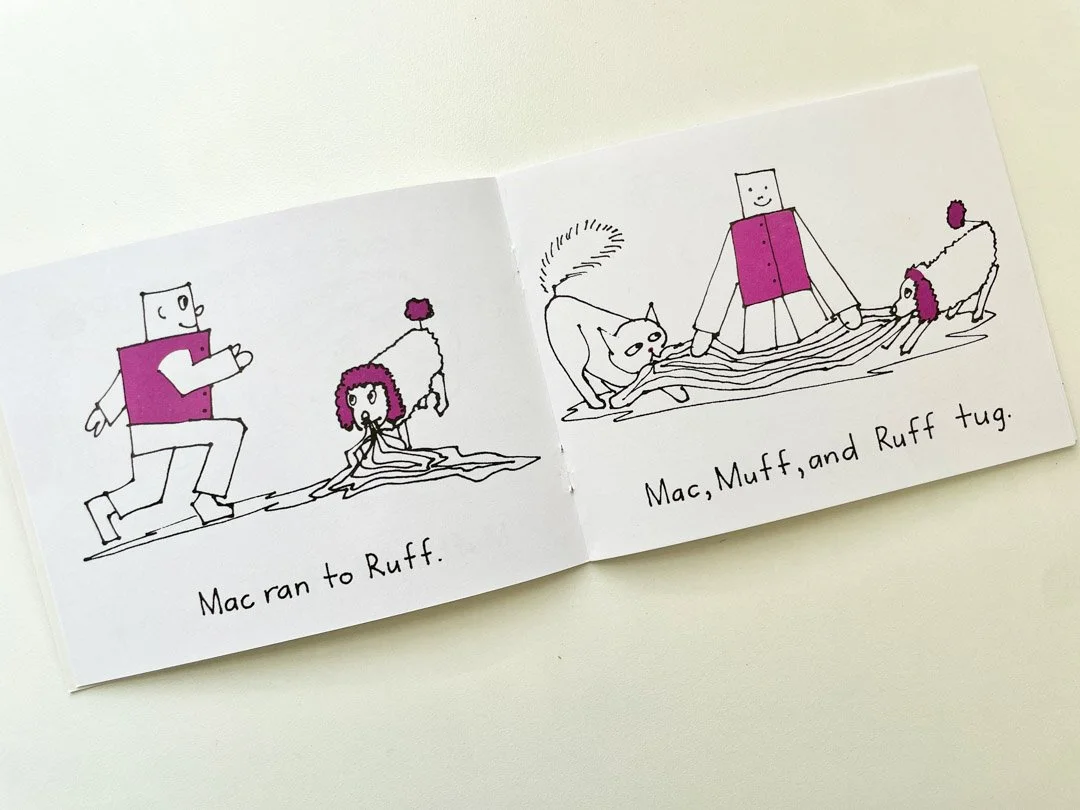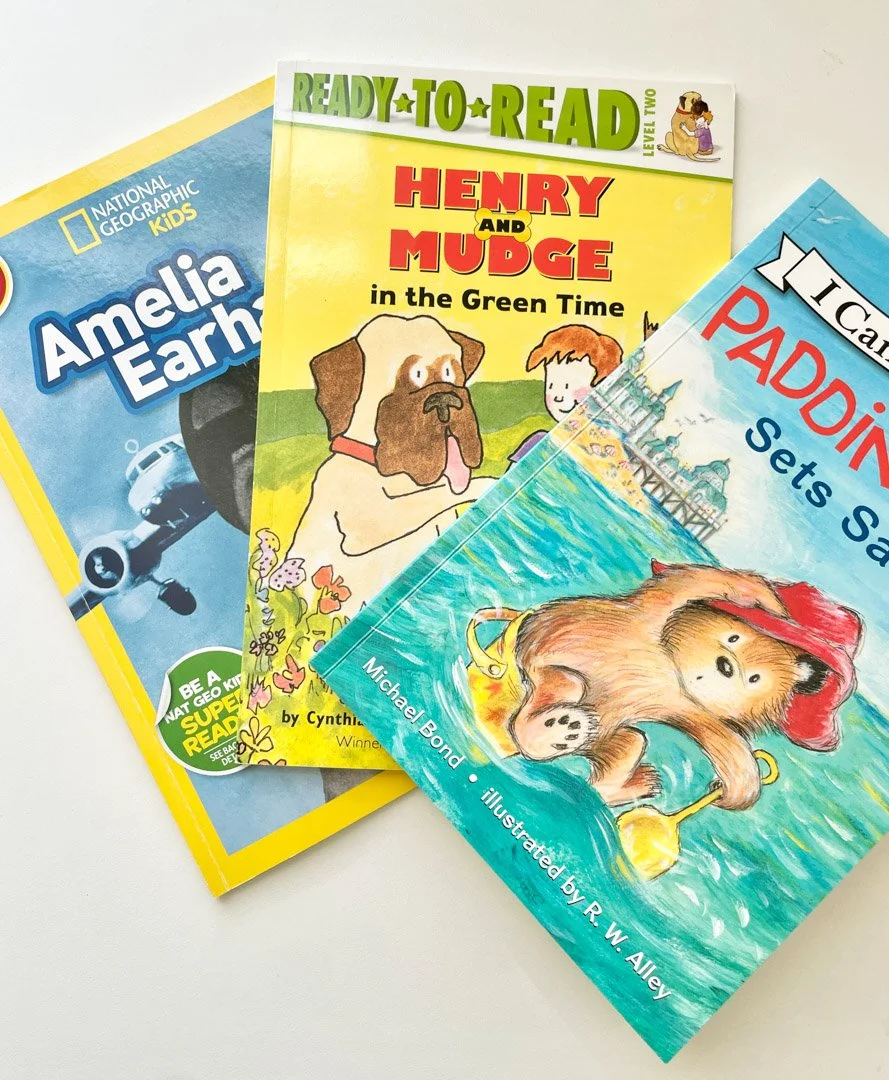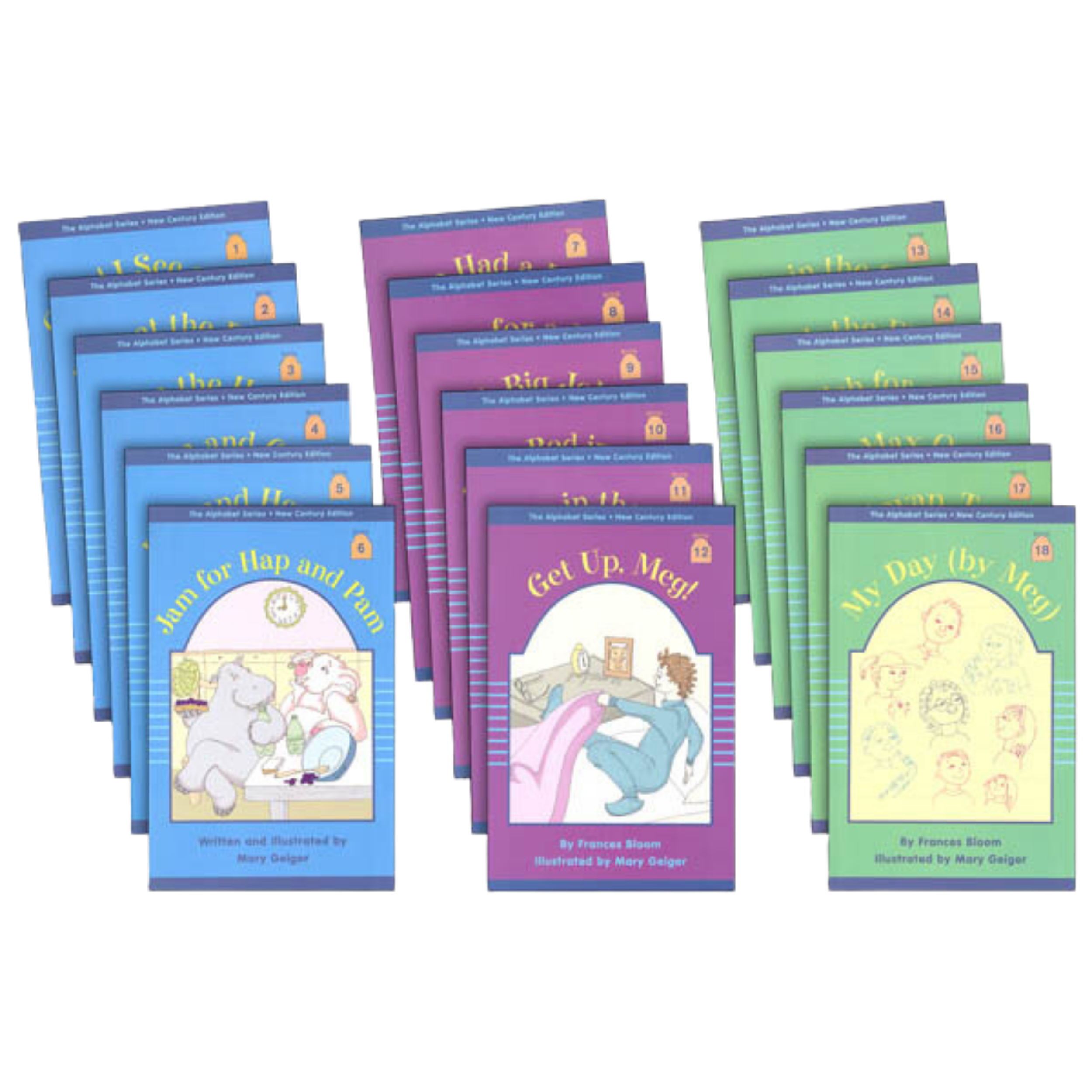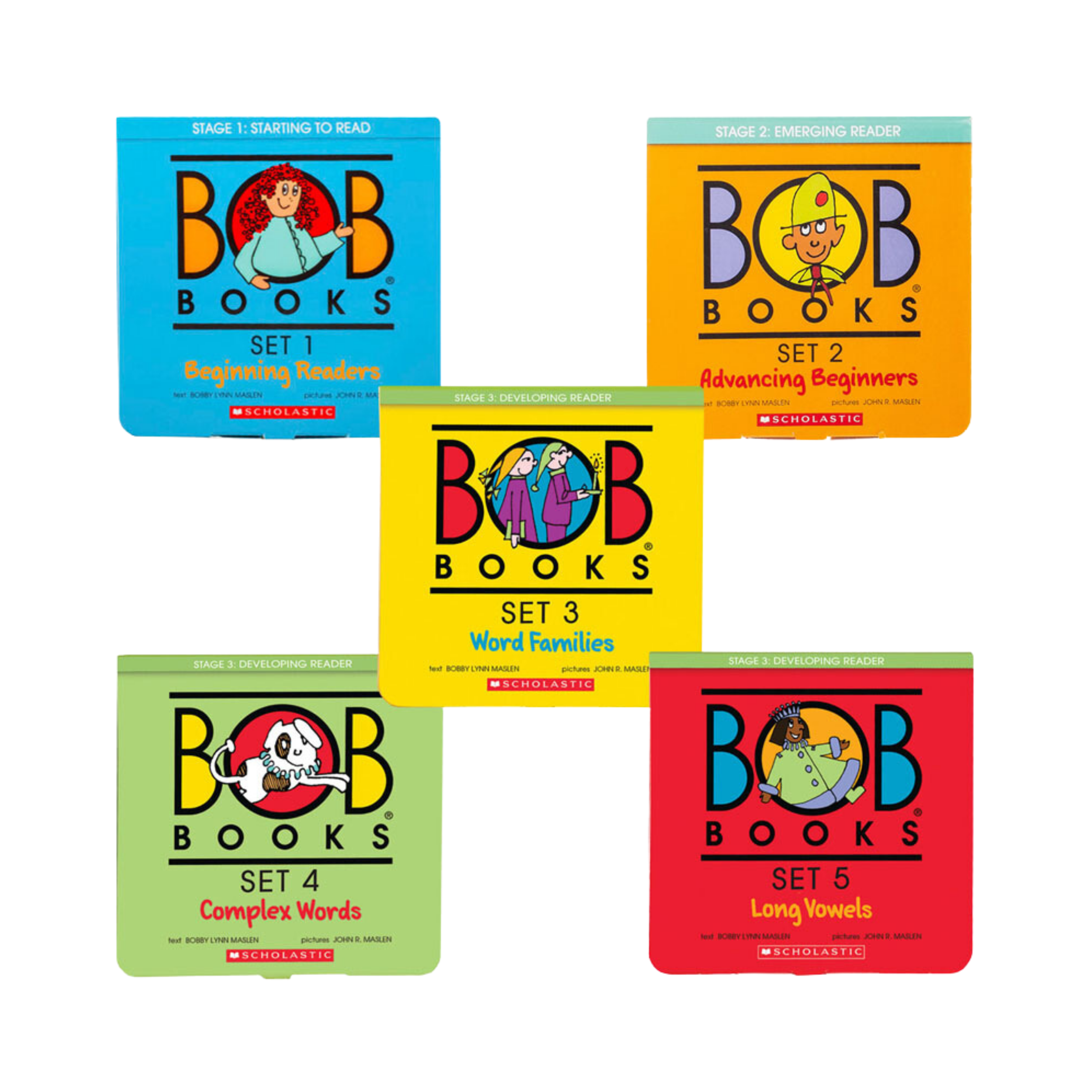decodable vs. leveled readers
There are a variety of early-reader books designed for children just beginning their reading journey. Unfortunately, it is often hard for parents to navigate the different types of readers available. Many of the early readers found in libraries and sold online are misleading, and, in the case of the Fountas and Pinnell leveling system, can actually have a negative impact on beginning readers. So let’s break down the different types of early readers.
Decodable Readers
Decodable readers are books that are specifically designed to help children learn to read by sounding out words phonetically. These books are structured in a way that introduces new sounds and letter combinations gradually, so that children can practice using the phonetic rules they have learned in previous lessons, sounding out the words to read.
Bob Decodable Reader
Flyleaf Decodable Reader
I Can Read It!
Leveled Readers
Leveled readers fall into two broad categories: readers that follow a scope and sequence based on high-frequency words and books that are sorted into somewhat arbitrary levels based on the text's complexity and the vocabulary's difficulty.
Books that follow an alphabetic leveling system (level A, level B, level C) are often based on the Fountas and Pinnell leveling system. This system encourages children to rely on repetitive text, picture clues, and context rather than decoding. For more on the cueing system for reading (and its ineffectiveness), check out this article in Education Week and the Sold a Story podcast.
Fountas and Pinnell Leveling System
Other types of leveled reader series sort books into different reading levels based on the text's complexity and the vocabulary's difficulty. These series, such as Step Into Reading, I Can Read, Dk Readers, etc., are often more interest-based. While these books will often provide a guide for parents/educators on their leveling system — the systems overall are like women's clothing size — each series has its own system, and sometimes that system is consistent and a good fit; other times it's a complete disaster. That said, these books are often a nice transition away from decodable text.
Early Readers | Ready to Read Series
What does this mean for home educators?
It’s important to keep in mind the differences in early readers when choosing a foundational reading program. Strong foundational reading programs are explicit and systematic. These programs teach children to decode words and provide decodable readers for practice.
If a reading program includes readers that follow a cueing-based system, that is typically a red flag that that particular program is not following best practices and current research on the science of reading. Some children will do fine with those types of programs, while others will appear to do ok but then need help when they attempt non-leveled text and text that includes longer words.
Use early reader series when your child is ready to transition away from decodable text. Rather than using the series level guide, preread these books to see if they are a good fit for your child's skills. Utilize shared reading to model and scaffold reading of the text until your child is ready to read them independently.
Decodable Reader Recommendations
Alphabet Series:
The Alphabet Series ($75-$85 for volume 1) goes along with Recipe for Reading, a foundational reading program. For more on Recipe for Reading, see this post. You can also pick up the associated Recipe for Reading workbooks for additional practice.
Whole Phonics:
Whole Phonics decodable readers are bright and colorful and run $80/set. This series is divided into levels based on vowel patterns, digraphs, word families, blends, and inflectional endings. They also have workbooks and resources to go along with the readers.
All About Reading:
All About Reading is staple in the homeschool community. For more on All About Reading, see this post. Even if you do not use their program, their decodable anthologies are a great option for decodable text. Each anthology is $23, with a full-level set running around $45-$65.
Reading for All Learners (I See Sam Readers):
You can find Reading for All Learners here and often second-hand on eBay. They also have free online books here. I often recommend this series for struggling readers as they very slowly introduce new sounds and high-frequency words. The text can be a bit dry, but the illustrations are comical, adding another layer to the text. These readers are available in full color ($51/set), black and white ($34/set), and digitally.
FlyLeaf Publishing:
Flyleaf Publishing (~$150/set) readers are beautifully written, featuring diverse characters and various genres and topics. That said, they are on the pricy end. They offer many of their readers free in digital form and discounted rates for library purchases.
Bob Books:
Bob Books ($15/set) are a classic decodable reader series. I tend to recommend the phonics readers over the sight word readers.
Frog Series and Toucan Series:
Emily Gibbons, from The Literacy Nest, has put out two decodable series with Heggerty, the Frog Series for grades K-1 ($50) and the Toucan Series for grades 2-4 ($40). These books are fun and lively, featuring diverse characters and topics.
Digital Resources
There are a variety of digital resources available both for free and for purchase. My top recommendations for digital resources are the free decodable passages from UFLI Foundations, found in their digital toolbox here. For more on UFLI, see this post.
I also like the decodable sentences and passages from The Literacy nest, found in her Teachers Pay Teachers store.
Wondering which decodable series matches your program or looking for additional recommendations? Check out this decodable reader guide from UFLI — it is the most comprehensive decodable reader resource I have seen.


















